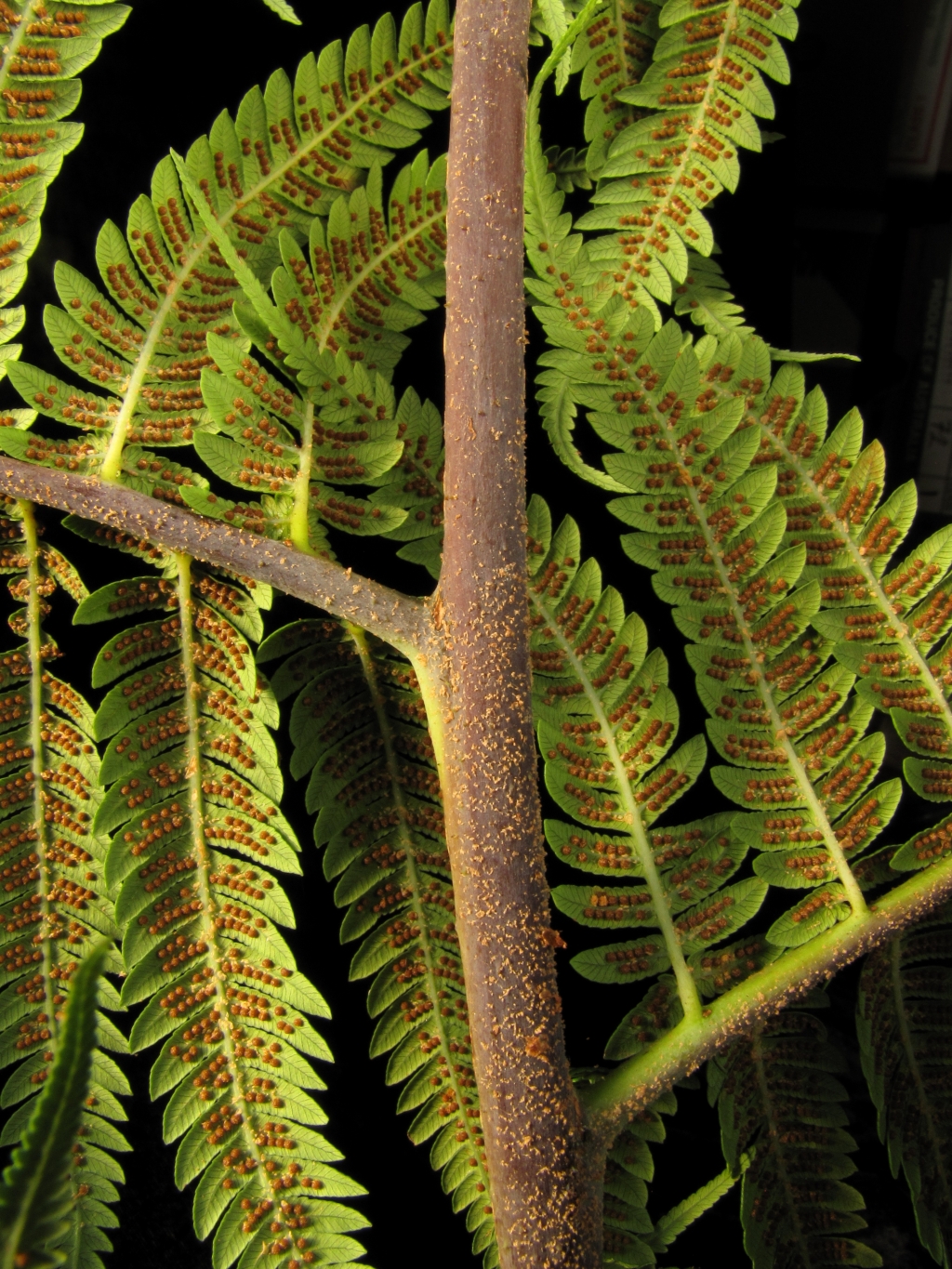Cyathea australis subsp. australis
Trunk erect, to 15 m tall, 15–40 cm diam. at base. Fronds 2–4 m long. Stipe to 80 cm long, coarse, brown, shiny, with numerous small, sharp, conical tubercles; scales (at base) tapering, 1.5–5 cm long, coarse, glossy-brown, almost opaque, with fragile edges when young and each with a dark red seta at tip. Lamina subtriangular, 3-pinnate with lowest pinna-pair slightly shorter than rest, mid-green, paler underneath; primary and secondary pinnae oblong-lanceolate to narrowly oblong with acute to acuminate tips; lower surface of rachises with various scattered scales; those of ultimate rachises and midveins of pinnules, small, ovate, markedly inflated with hair-like tips or setae; upper surface of rachises with fine hairs. Pinnules attached by full breadth, decurrent, margins slightly crenulate to shallowly toothed. Sori with globular, hairy receptacle; indusia inconspicuous, consisting of a few, fringed scales at base of each receptacle.
GipP, EGL, EGU, HSF, HNF, OtR. CVU, EGL, EGU, GipP, Glep, Gold, GGr, HFE, HNF, HSF, MonT, NIS, OtP, OtR, SnM, Strz, VAlp, VVP, WaP, WPro. Also Qld, NSW, Tas. (including Bass Strait islands). Common in southern Victoria from near sea-level to mountain slopes, growing in shaded fern gullies and in the understorey of wet forest, virtually coextensive with, but usually in more exposed positions than Dicksonia antarctica.
The rough pimpled stipe-base and broad, mid-green fronds (somewhat yellowed in open sites) are characteristic of this species.
 Spinning
Spinning